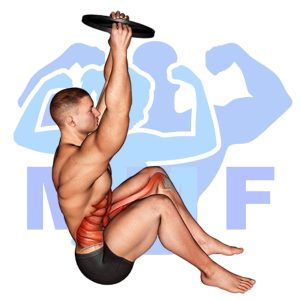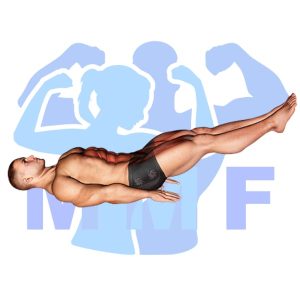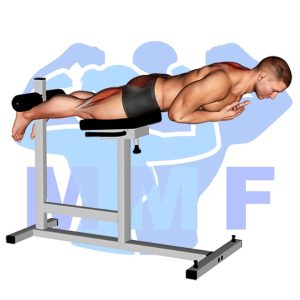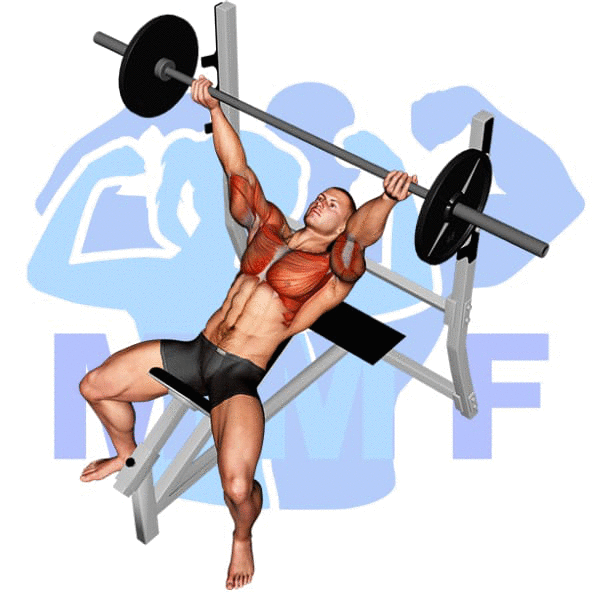Are you tired of doing countless crunches with little to no results? You’re not alone. Many people struggle with stubborn belly fat that just won’t budge. The tuck crunch is a great way to target those hard-to-reach lower abs, but it can be challenging to execute correctly without proper guidance. Don’t worry, we understand your frustration and we’re here to help. In this post, we’ll dive into the common mistakes people make when attempting the tuck crunch and provide you with simple yet effective solutions to help you master this move and achieve the flat tummy you’ve been dreaming of.
Tuck Crunch Summary
- Primary Muscles: Rectus Abdominis
- Secondary Muscles: Obliques
- Equipment: Body Weight
- Mechanics Type: Isolated
- Force: Pull
- Utility: Auxiliary

Tuck Crunch Instructions
- Setup by laying back on a mat or the floor with your knees bent, feet off the ground, and calves parallel to the ground.
- Place your hands behind your head.
- Contract your abs to raise your upper torso off the floor.
- Then, your shoulders until they contact the mat.
- Repeat your Tuck Crunch for 10-30 repetitions.
Video Tutorial
Tuck Crunch Muscles
Target (Agonist)
Synergists
Dynamic Stabilizers
- None
Stabilizers
- Gluteus Medius (opposite)
- Tensor Fasciae Latae (opposite)
Antagonist Stabilizers
- None

Benefits of Tuck Crunch
The tuck crunch is a great exercise for targeting the rectus abdominis, which is the muscle responsible for creating the “six-pack” look. This exercise works the entire abdominal region, but places a greater emphasis on the rectus abdominis by having the user curl the torso up and bring their knees towards their chest. It is a great exercise to include in any strength training or fitness routine as it helps to strengthen the core and improve balance. Additionally, this exercise can also help to improve posture and reduce back pain.
Tips for Performing Tuck Crunch
You’ve come to the right place if you’re motivated to enhance your tuck crunch execution. Using these suggestions can enable you to take full advantage of this amazing exercise. You will develop your stomach muscles, and even lower your chances of experiencing an injury. So let’s begin now and see what these suggestions may accomplish for you.
- Make sure your form is correct: The tuck crunch is a great exercise to target your abs, but it’s important to make sure you’re doing it right. Keep your back flat and your chest up, and focus on contracting your core as you tuck your legs in towards your chest. This will ensure you get the most out of the exercise and avoid any potential injuries.
- Increase the intensity: To increase the difficulty of this exercise, try adding a pause at the top of the crunch and/or bringing your knees in closer to your chest. This will make the exercise more challenging and help you get better results.
- Have fun: Working out can be tough, but make sure you find a way to have fun with it! Get creative with your workouts, switch up your exercises, and challenge yourself to do something new each time. It will help keep you motivated and make your workouts more enjoyable.
Benefits and Tips Video
Frequent Mistakes To Avoid
Avoiding common errors might be the difference between a productive training session and an injury when executing tuck crunch. Also, in order to maximize the benefits of the exercise, appropriate technique is critical. Through avoiding common mistakes, you will improve your ability to achieve your desired results. But don’t worry, it’s not nearly as hard as it may appear. You can execute the exercise safely and effectively by avoiding the mistakes to prevent and by executing the proper steps. Let’s begin by staying away from these standard errors and add this exercise to your training regimen.
- Not Keeping Their Core Engaged – Not engaging their core throughout the exercise will lead to their body using momentum instead of strength to complete the exercise, making it less effective.
- Not Using Proper Form – Not using proper form while doing tuck crunches can increase the risk of injury and make it harder to get the full benefit of the exercise.
- Not Doing Enough Reps – Not doing enough reps can mean that you won’t get the full benefit from the exercise and you won’t achieve the desired results.
Find More Bodyweight Exercises Here
Variations and Complementary Exercises
Once you’ve mastered the tuck crunch, there are plenty of variations, complementary, and alternative exercises you can do to continue strengthening your core muscles. These exercises all work similar muscles as the tuck crunch and will help you take your core workout to the next level.
Superman Plank

Superman Plank is a great complementary or alternative exercise to the Tuck Crunch. It works the same muscles as the Tuck Crunch, but also adds additional challenges to the core and back muscles. By lying on your stomach and lifting both arms and legs off the ground at the same time, you engage your core and back muscles more deeply than with a Tuck Crunch. Superman Plank also works the lower back muscles, which can improve balance and stability, as well as help prevent lower back pain. It can be done for a longer duration than a Tuck Crunch, making it an excellent choice for a more intense workout.
Sit Up

The Sit Up is a great complementary or alternative exercise to the Tuck Crunch. This exercise targets the same core muscles as the Tuck Crunch, however it involves a greater range of motion. To perform a Sit Up, begin by lying flat on your back and keeping your legs bent and feet flat on the ground. Then, brace your core and lift your upper body off the ground until your shoulder blades are off the floor. Hold for a few seconds before slowly lowering yourself back to the starting position. Sit Ups are a great way to challenge the core muscles and can be modified with various techniques to increase or decrease intensity.
Reverse Crunches

Reverse Crunches are a great alternative to the Tuck Crunch exercise, as they work the same core muscles in a slightly different way. During a Reverse Crunch, you lie on your back with your hands behind your head and your legs bent at a 90-degree angle. From this position, you contract your abdominal muscles to lift your hips off the floor, rolling your knees towards your chest. This exercise not only works the same core muscles as the Tuck Crunch but also adds an extra challenge as you have to keep your lower back pressed firmly against the floor as you lift your hips. This makes it a great complementary exercise for the Tuck Crunch and is a great way to add variety and challenge to your core workout routine.
Check Out These Top Bodyweight Exercises
Parallel Bar Leg Raise

The Parallel Bar Leg Raise is a great alternative or complementary exercise for the Tuck Crunch. This exercise works the lower abdominal muscles by having you hold onto the parallel bars and raise your legs straight up and then slowly lower them back down. It helps build core strength and stability, which is important for overall balance and posture. This exercise can be made more challenging by adding a weight plate between your feet or by increasing the range of motion, such as raising your legs higher. The Parallel Bar Leg Raise is an effective way to target the lower abdominals and should be included in any core-strengthening routine.
Otis Up

Otis Up is a great complementary or alternative exercise to the Tuck Crunch. It requires you to use your core muscles to lift your hips and legs off the ground while you keep your arms straight and your back flat. This exercise engages your abdominal muscles and hip flexors in a way that the Tuck Crunch does not, targeting the lower abs more efficiently. Furthermore, it also helps to strengthen your shoulders and back muscles. This makes Otis Up an ideal exercise to add variety to your workout routine and ensure you’re getting the most out of your core-strengthening exercises.
Lying Leg Lift Hold

The Lying Leg Lift Hold is a great alternative or complementary exercise to the Tuck Crunch. It strengthens the core muscles and improves hip mobility while engaging the lower abdominal muscles. In this exercise, you lie on your back with your legs straight and lift them up to a 90-degree angle. Hold the position for 10 to 30 seconds, then lower your legs back down to the starting position. This exercise is great for targeting the deep abdominal muscles and can be done as part of a core routine or as a stand-alone exercise.
Find More Abs Exercises Here
Opposing Complementary Exercises
By using opposing muscle groups, you can further strengthen your core and improve your performance. The following exercises can help you accomplish this goal by working the opposite muscles as the tuck crunch exercise.
Hyperextension

Hyperextension is a great complement to the Tuck Crunch exercise as it works the opposing muscle group. The Tuck Crunch primarily works the core muscles and the hip flexors, while Hyperextension works the lower back muscles and hamstrings. This helps to create an overall balanced workout that strengthens all the major muscle groups in the core area. By alternating between these two exercises, you can ensure that your abdominal muscles, hip flexors, lower back muscles, and hamstrings are all getting a thorough workout.
Reverse Hyperextension

Reverse Hyperextension is a complementary exercise to the Tuck Crunch as it works the opposing muscle group. It targets the lower back, glutes, and hamstrings. This exercise is performed by lying face down on a reverse hyperextension machine and raising your legs up as far as possible while keeping your back flat. This movement activates the lower back muscles and strengthens them, which helps to balance out the effects of the tuck crunch which mainly works the abs. Reverse hyperextension also helps to improve core stability and posture, making it an important exercise for anyone looking to develop a strong core.
Plate Hyperextension

Plate Hyperextension is a great exercise to complement the Tuck Crunch, as it targets the opposing muscle group. Plate Hyperextension works the lower back muscles, while the Tuck Crunch works the abs. By doing both exercises, it helps to create balance and symmetry in the body, which is essential for maintaining good posture. The Plate Hyperextension also works to strengthen the posterior chain muscles, which are important for stability and balance. In addition to these benefits, Plate Hyperextension also helps to improve flexibility and mobility in the lower back and hips. All these benefits make Plate Hyperextension a great choice for anyone looking to strengthen their core muscles.
Transform Your Abs with Tuck Crunches
Ready to take your ab game to the next level? Tuck crunches could be just what you’re looking for. Not only do they target the rectus abdominis (your “six-pack” muscles), they also engage your hip flexors and lower back muscles for a well-rounded workout. With proper form and consistency, you’ll begin to see a noticeable difference in the strength and definition of your abs. So why not give tuck crunches a try and start transforming your core today?
References: Wikipedia | ExRx.net | PubMed.gov | Comprehensive List of Abs Bodyweight Exercises




